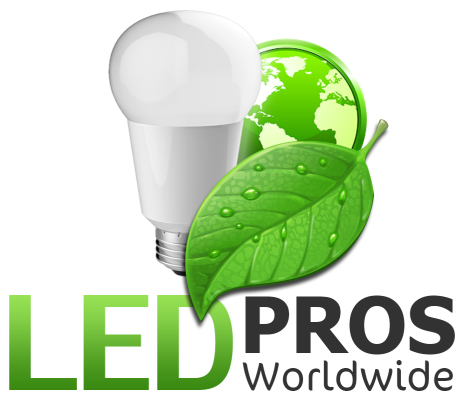When it comes to indoor swimming pools, lighting plays a crucial role in creating a safe, comfortable, and visually appealing environment. Natatoriums, which are buildings that house indoor pools, require specialized lighting solutions to address the unique challenges posed by high levels of humidity, water, and chlorine. In this comprehensive guide, we’ll explore the world of natatorium lighting, discussing the key considerations, best practices, and innovative solutions for illuminating these aquatic facilities.
What is a Natatorium?
Before we dive into the intricacies of natatorium lighting, let’s clarify what a natatorium is. A natatorium is a building or structure that contains an indoor swimming pool. These facilities are designed to provide a controlled environment for swimming, diving, and other aquatic activities, regardless of the weather conditions outside. Natatoriums can be found in various settings, such as schools, universities, community centers, and fitness clubs. Read more about Diving Into Brilliance: The Essential Guide to Indoor Swimming Pool Lights for Swim Schools here.
The Challenges of Natatorium Lighting
Illuminating a natatorium comes with its own set of challenges due to the unique environmental factors present in indoor pool areas. These challenges include:
- High humidity levels: The constant evaporation of water from the pool leads to increased humidity, which can affect the performance and longevity of lighting fixtures.
- Corrosive atmosphere: The presence of chlorine and other pool chemicals in the air can cause corrosion and deterioration of lighting components.
- Glare and reflections: The water’s surface can create glare and reflections, which can be distracting and uncomfortable for swimmers and spectators.
- Safety concerns: Proper illumination is essential to ensure the safety of swimmers, lifeguards, and pool staff, as it helps prevent accidents and enhances visibility.
Choosing the Right Natatorium Lighting Fixtures
To address these challenges, it’s crucial to select the appropriate indoor swimming pool lighting fixtures. Here are some key factors to consider:
- Moisture resistance: Look for lighting fixtures that are specifically designed for high-humidity environments. These fixtures should have proper sealing, gaskets, and corrosion-resistant materials to withstand the damp conditions.
- Corrosion resistance: Choose fixtures made from materials that can resist the corrosive effects of chlorine and other pool chemicals. Stainless steel, aluminum, and polymeric materials are often used in natatorium lighting fixtures for their corrosion-resistant properties.
- Glare reduction: Opt for fixtures with diffusers or louvers that help minimize glare and reflections from the water’s surface. Indirect lighting techniques can also be employed to reduce glare and create a more comfortable visual environment.
- Energy efficiency: Consider using LED natatorium lighting fixtures, as they offer superior energy efficiency, longer lifespans, and lower maintenance requirements compared to traditional lighting options.
Natatorium Rated Lighting: Meeting the Standards
To ensure the safety and performance of natatorium lighting, it’s essential to adhere to established standards and regulations. In the United States, the National Electrical Code (NEC) and the Illuminating Engineering Society (IES) provide guidelines for natatorium lighting design and installation. These standards cover aspects such as:
– Minimum illumination levels for various pool areas and activities
– Proper placement and spacing of lighting fixtures
– Required levels of moisture and corrosion resistance
– Electrical safety considerations, including ground-fault circuit interrupter (GFCI) protection
By following these standards and working with experienced lighting professionals, you can ensure that your natatorium lighting system meets the necessary safety and performance criteria. Read more about The Essential Guide to Indoor Swimming Pool Lights for Swim Schools here.
Innovative Natatorium Lighting Solutions
In recent years, advancements in lighting technology have led to the development of innovative solutions for natatorium lighting. Some of these cutting-edge options include:
- Color-changing LED fixtures: These fixtures allow for the creation of dynamic and engaging lighting scenes, enhancing the visual appeal of the pool area and creating a unique atmosphere for special events.
- Smart lighting controls: Automated lighting control systems can optimize energy usage, adjust illumination levels based on occupancy and daylight availability, and provide remote monitoring and management capabilities.
- Underwater lighting: Incorporating LED underwater lights can add a captivating visual element to the pool, improve visibility for swimmers, and create a more immersive aquatic experience.
FAQs
- What is the ideal color temperature for natatorium lighting?
– The ideal color temperature for natatorium lighting is typically between 4000K and 6500K, which provides a cool, crisp, and invigorating atmosphere that enhances visibility and alertness.
- How often should natatorium lighting fixtures be inspected and maintained?
– Natatorium lighting fixtures should be inspected and maintained at least once a year to ensure optimal performance, safety, and longevity. Regular cleaning, repairs, and replacements may be necessary to address any issues caused by the harsh pool environment.
- Can regular lighting fixtures be used in a natatorium?
– No, regular lighting fixtures are not suitable for use in a natatorium. The high humidity, chlorine, and other corrosive elements present in indoor pool areas can quickly degrade and damage standard lighting fixtures, leading to safety hazards and reduced performance. It’s essential to use specifically designed natatorium lighting fixtures that can withstand these challenging conditions.
Conclusion
Proper natatorium lighting is essential for creating a safe, comfortable, and visually appealing environment for swimmers, spectators, and pool staff. By understanding the unique challenges of indoor pool areas, selecting the right natatorium lighting fixtures, adhering to established standards, and exploring innovative solutions, you can ensure that your natatorium is well-lit and inviting. With careful planning and expert guidance, you can illuminate your natatorium in a way that enhances the overall swimming experience and creates a welcoming atmosphere for all.
